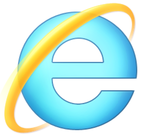Security Basics: Vulnerability Detection

This post is one in a series of blog posts on the fundamentals of an information security program. You can see the complete list of posts in this series here . Another cause of system and network vulnerabilities is configuration choices. Modern systems can be very complex, with a bewildering array of potential configuration options. Identifying and understanding these is a major challenge, as is ensuring that all of your systems and devices are configured as intended.Anything man-made will have imperfections. When they are serious and potentially life-threatening, we sometimes spend a lot of time and effort to remedy them. My minivan, for instance, has been in to the dealer for three different recall-related repairs in the eleven years I've had it! Modern software is, in many ways, more complex than any physical thing that can be built. Yet its ephemeral nature makes it relatively easy to modify after its initial "manufacturing" is complete. The consequence of the






